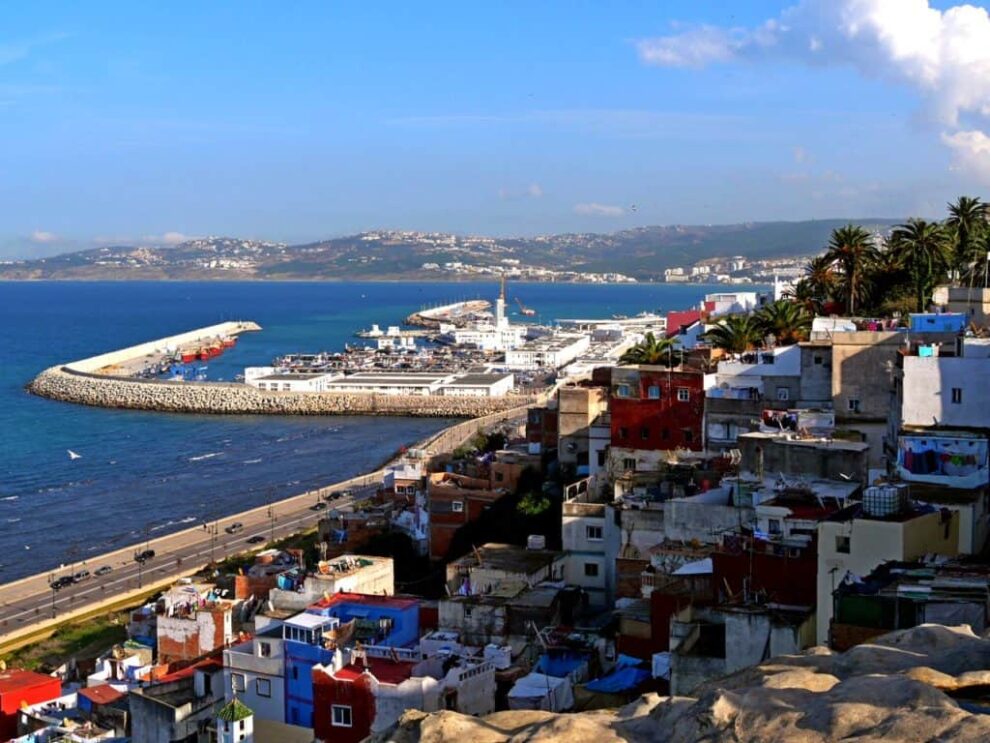The Complete City Guide to Tangier Morocco. Is Tangier worth visiting? What can you see and do in Tangier? In this in-depth city guide, you’ll find an overview of the most interesting places to visit in Tangier, recommendations about where to stay and where to eat and information about how to get around the city.
Ever since I first came to Tangier Morocco, this city has never stopped fascinating me. I lived there for 6 months and it’s still to this day one of my favorite cities in the world.
It has everything I ever wanted from a city: a sense of exotic mystery, the most interesting history, beautiful sights, and unspoiled beaches.
On top of that, Tangier is an uncontrolled mix of North Africa, Spain, Portugal and France, the ideal melting pot for my culture hungry mind.
Each day ferries cross the Strait of Gibraltar to this city from Europe, making it one of the most cosmopolitan cities in Africa.
You can easily spend a few days in Tangier without getting bored. There are a lot of cultural, historical and colorful sites to visit.
Here’s an overview of things to do and places to visit in the city. You can easily tackle all the places in one day.
1. Cafe Hafa
Cafe Hafa is practically an institution of historical Tangier and is a must-see for anyone passing through.
It has existed since 1921, as it so proudly proclaims at its entrance, and resides on a cliffside with a stunning panorama of the Mediterranean sea.
This outdoor cafe is almost always packed in the afternoons with locals and tourists playing music, cards, and sprawling out across the tables. If you prefer to go while it is quieter, the mornings are the way to go.
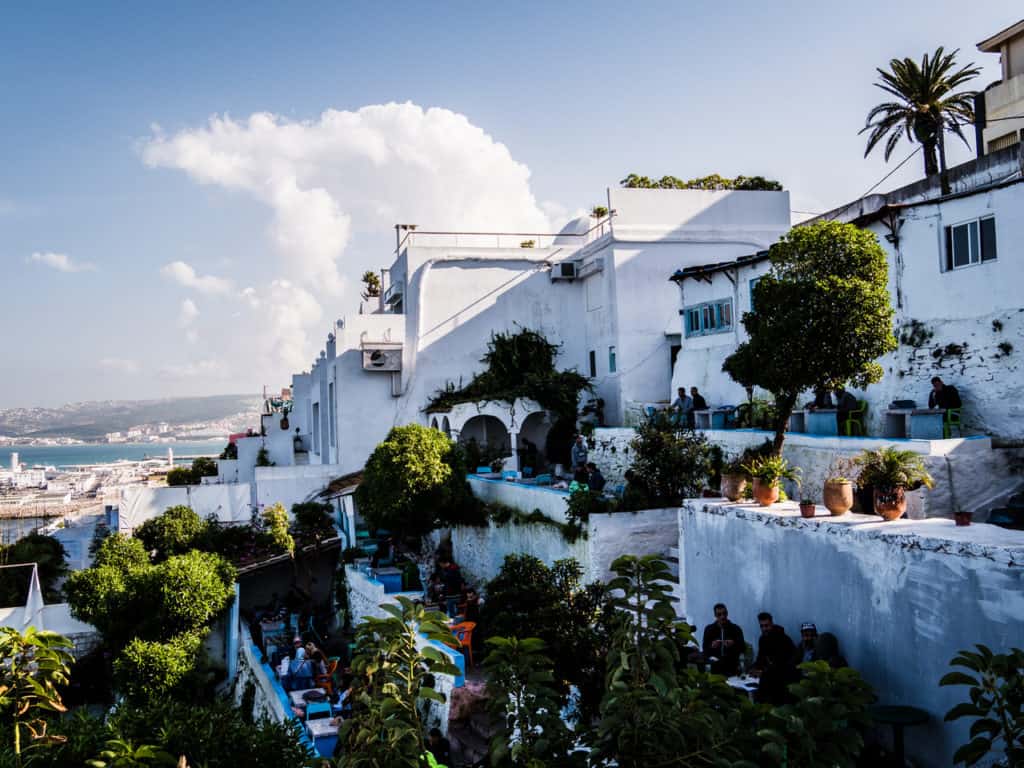
Either way, it is always the perfect place to have a traditional sugary sweet Moroccan mint tea and relax as you enjoy one of the best views in the city. Being one of the cheapest teas in town, a full glass costs only 7-10 dirham.
While it is not a restaurant, you can order a steaming bowl of bissara, a Moroccan soup made of fava beans and split peas topped with olive oil and cumin.
The cafe is located in the heart of Merchan, a more residential area on a hill just above the Kasbah, at the end of Rue Hafa.
2. Phoenician Tombs
The Phoenician tombs are located between Cafe Hafa and the top entrance to the Old Kasbah.
It’s true that these tomb structures are very often filled with water and litter, but they are still interesting and of great historic value.
The top of the cliff where the tombs are located offers fantastic views over the city and the harbor.
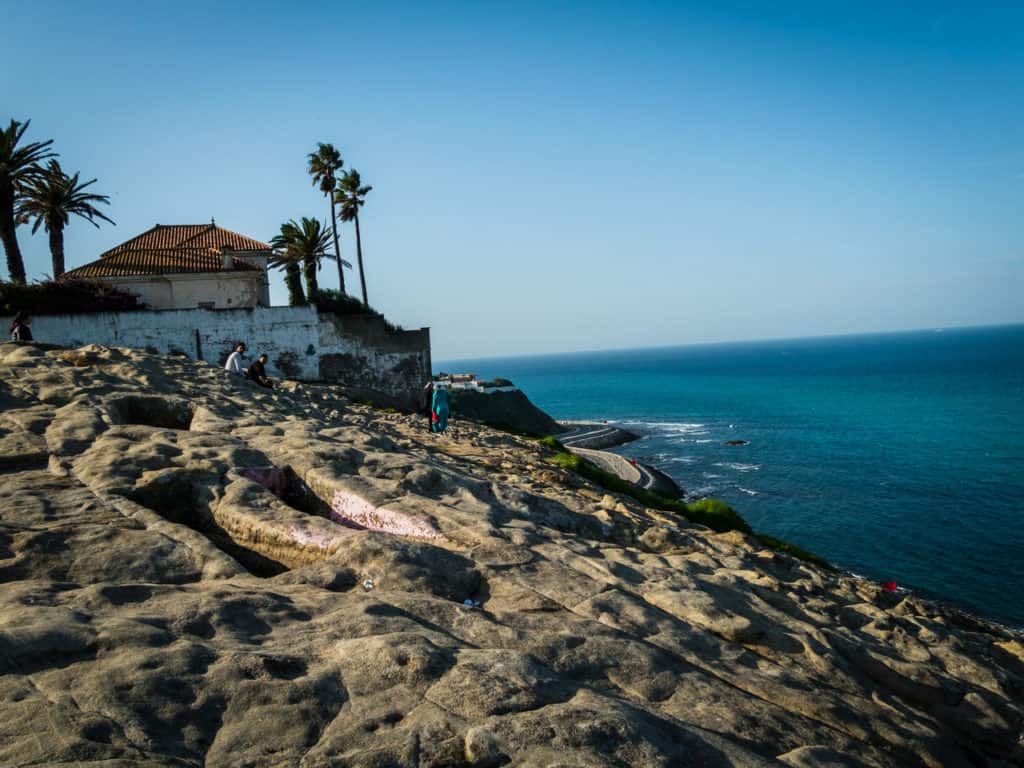
This is a place where the locals go to relax so if you have time, go there at sunset, take some drinks and snacks and sit down for a while.
On a sunny day, you can see Tarifa in Spain.
3. Get Lost In The Old Kasbah
Getting lost in the old city is an absolute must when visiting Tangier! What is so interesting about the old medina is the miles and miles of tiny, narrow, endless paths in between the buildings where one can get lost in no time.
Wandering the narrow streets of the medina used to be my favorite pastime when I was living in Tangier and I would absolutely suggest it if you want to get a real feel of the city.
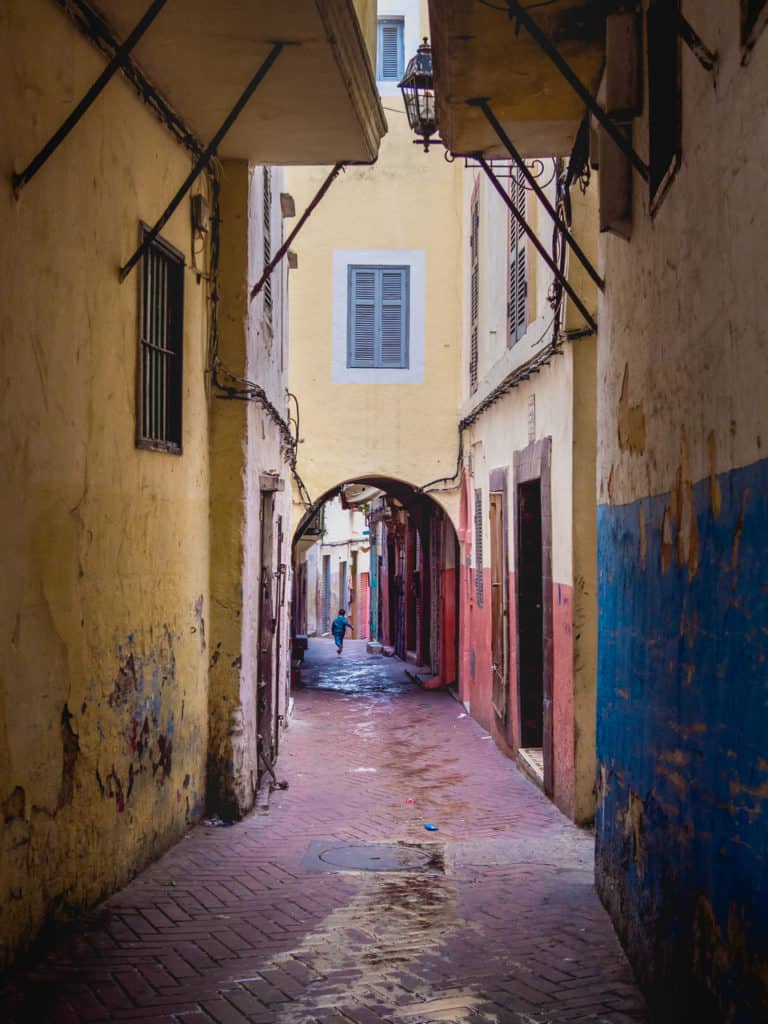
Walking randomly in any old town is always an enjoyable experience. I walked in the medina of Tangier almost on a daily basis while I was living there. It’s clean and there is practically no harassment from sellers as in other Moroccan cities, like Marrakesh.
It’s located right on one side of the Grand Socco and about 3 km from the train station. It’s also the place where most of the hostels and riads are located.
4. Kasbah Museum
When I, Ruby, first saw the Kasbah Museum, it was not as a curious tourist, but as a choreographer holding rehearsals in the open building behind the museum’s gardens.
It wasn’t until I had lived there almost a year that a took a more traditional walk around this beautiful building- I had been missing out.
This museum was once known as “Dar el Makhzen,” which translates roughly to “The Sultan’s Palace,” and was the residence of Portuguese governors between 1471 and 1661.
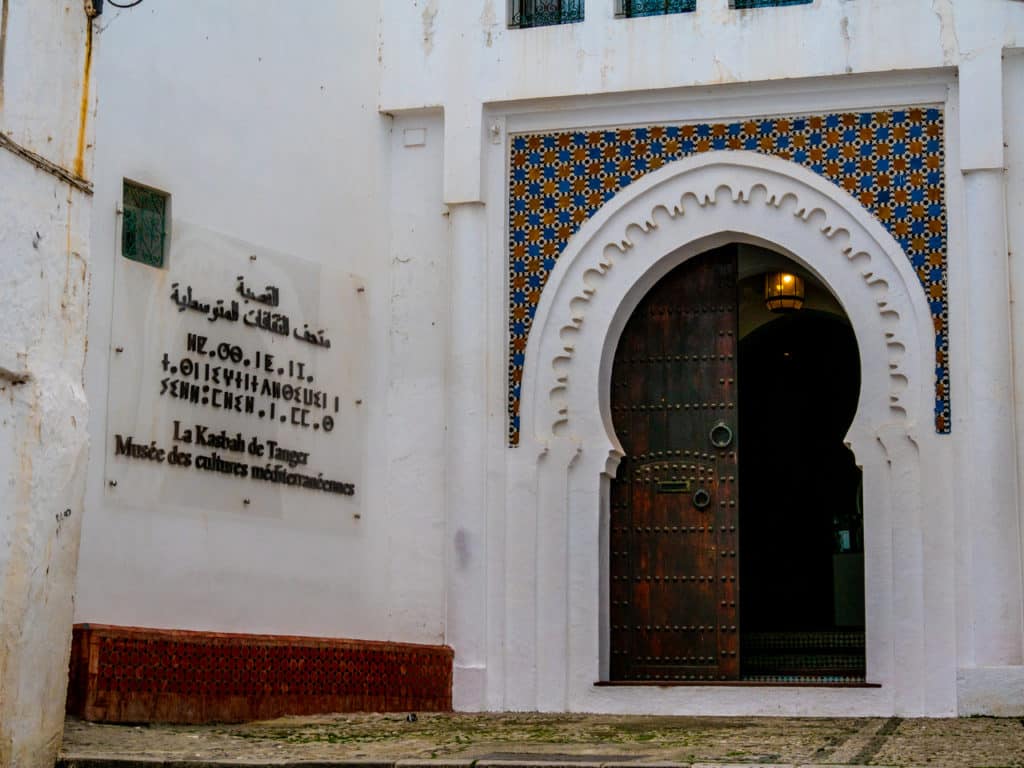
It is now hosting a collection of archaeological and ethnographic artifacts, most of which come from the north of Morocco.
It is located in the Kasbah and can be reached easily by walking from anywhere in the city center or by petit taxi. The entrance fee is 20 dirhams per person and is open from 10am-6pm every day except Tuesdays.
5. Petit Socco
Right in between the hike from the Grand Socco to the port, you will come across a smaller square, lined with a few cafes and several shops and galleries.
The Petit Socco is a popular stop for a coffee at Cafe Tingis, an old beatnik-era institution, or the slightly more modern Cafe Central.
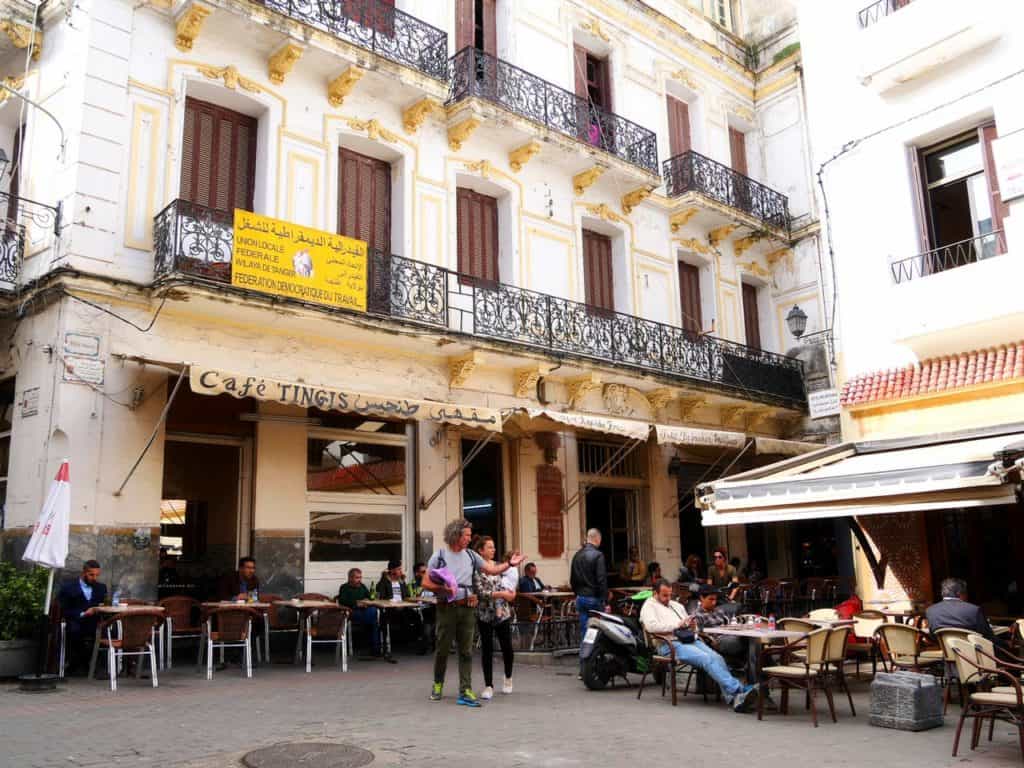
It snakes off into several small, winding streets of the old medina where you can find more hidden shops and markets to explore.
6. American Legalation
The American Legation is a museum, cultural center, and research library that holds historical and artistic artifacts and is home to a rich history of diplomatic relations between the United States and Morocco.
It was, in fact, the very first American public property outside of the US and the renovated building has kept up its colonial-era historic feel. It is located in the old medina at 8 Rue d’Amerique and costs 20 dirhams to enter.
Also, fun fact: Ruby’s husband (a Moroccan man she met here in Tangier) proposed to her in the gardens of the American Legation, creating yet another very small piece of multi-cultural history that happened in that location. You can read a tiny bit about their Moroccan wedding here.
7. The Grand Socco & Cinema Rif
The Grand Socco goes by a few different names- Souk Ibarra, if you’re a local, but it is officially called Place du Grand 9 Avril 1947 after a famous speech given by King Mohammed V in support of Moroccan independence on, of course, April 9, 1947.
It is home to a large market on one side which is a wonderfully chaotic and sensory place to explore and a towering beautiful mosque just across the roundabout.
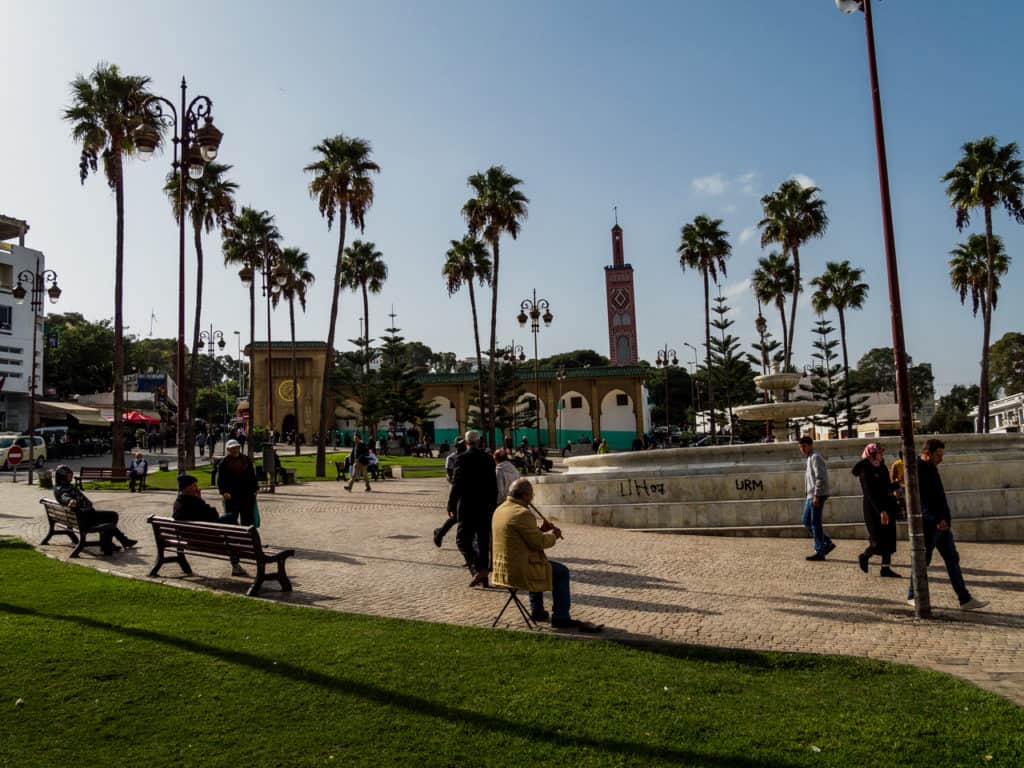
Bab Fass is the grand archway that leads into the old medina and up to the Kasbah and on the other side you can have tea and people watch from the cafe at Cinema Rif.
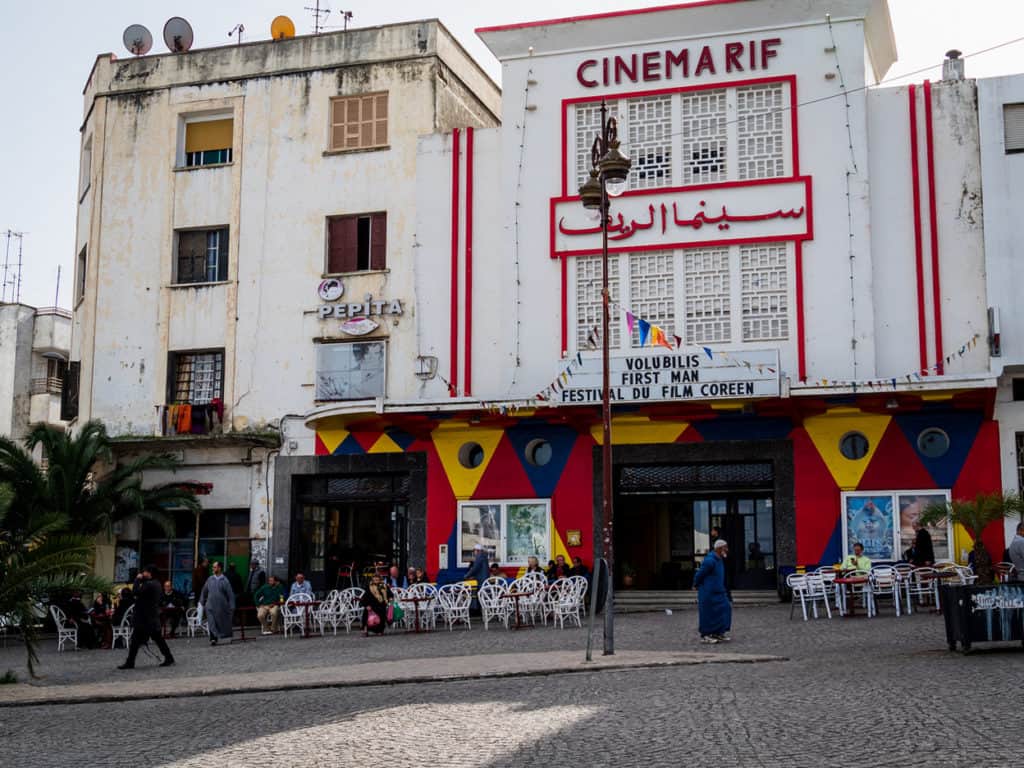
Cinema Rif is an old movie theatre where you can watch both alternative and mainstream films. It also has a cafe that is very popular among the young locals and artists of Tangier.
It’s definitely worth going there to have a coffee or a glass of wine and enjoy the retro- ambiance of this artsy building.
8. Markets In Tangier – Grand Socco Market & Berber Farmer Market
Like any other city in Morocco, Tangier also has a few colorful souks (markets) that are a pleasure for the eye and nose to visit.
The biggest souk is the indoor Grand Socco Market, located at the Grand Socco (see above), where you can daily buy fresh fruits, vegetables, meat, bread, olives, herbs, etc.
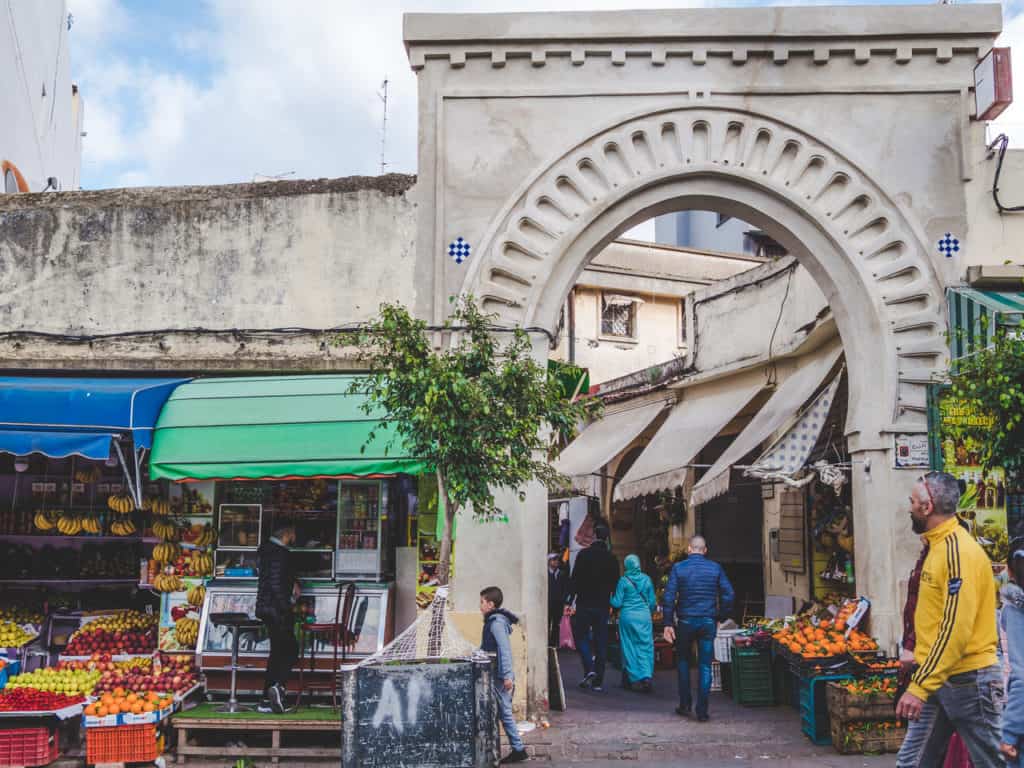
The Berbers from nearby villages come to Tangier to sell their products, mainly fresh fruits, and vegetables from their farms.
It’s a colorful and chaotic experience to walk through these streets filled with all the fruits and veggies you can get in Morocco!
On the square opposite St. Andrew’s Church you can also buy Tajines, antiques, clothes and random old trinkets.
9. St. Andrew’s Church
Visiting an Anglican church in Tangier, Morocco may sound a bit out-of-the-ordinary, but St. Andrew’s is a beautiful, historic sort of sanctuary in the middle of the bustling city.
It was consecrated in 1905 and the overgrown, flourishing gardens in the churchyard are home to the grave sites of many historical figures.
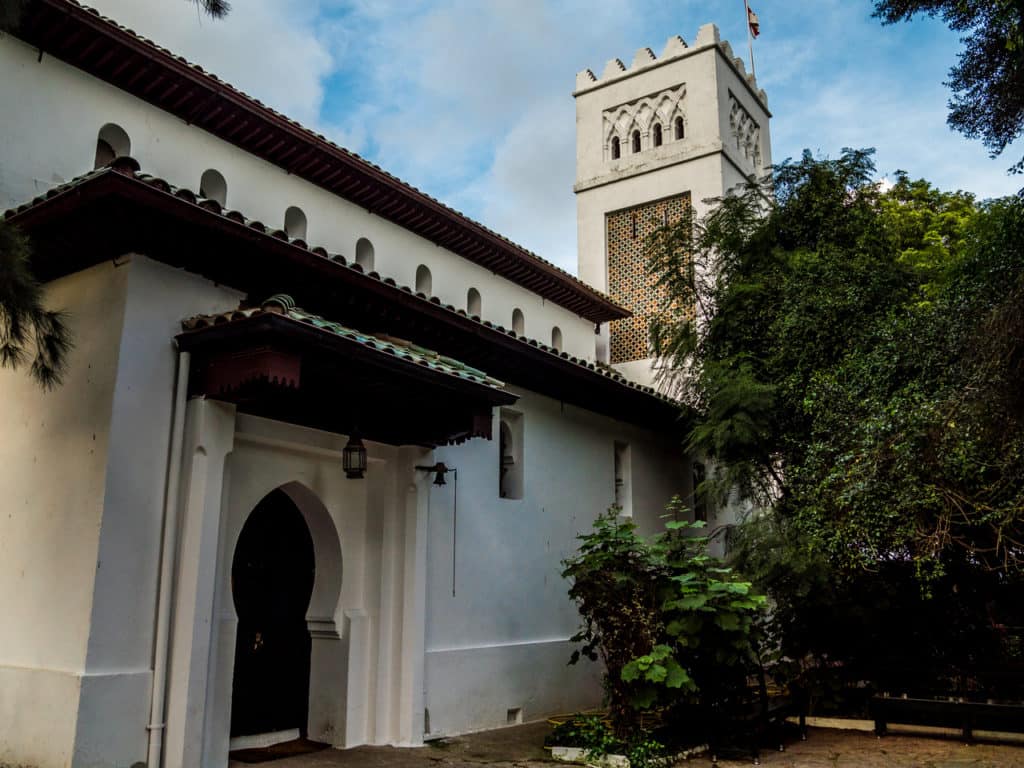
The chapel was also once painted by the famous French artist Henri Matisse during his stay in the city in 1912.
Being very close to the Grand Socco, it is an easy walk from the old medina and is located, appropriately enough, on Rue d’Angleterre (the English Road).
10. Teatro Cervantes
My dream is that someday this theater is fully renovated, keeping its beautiful old art deco style and that I can create a dance performance for its stage.
The Gran Teatro Cervantes was built in 1913 by the Spanish and was considered at one point one of the most prestigious theaters in North Africa.
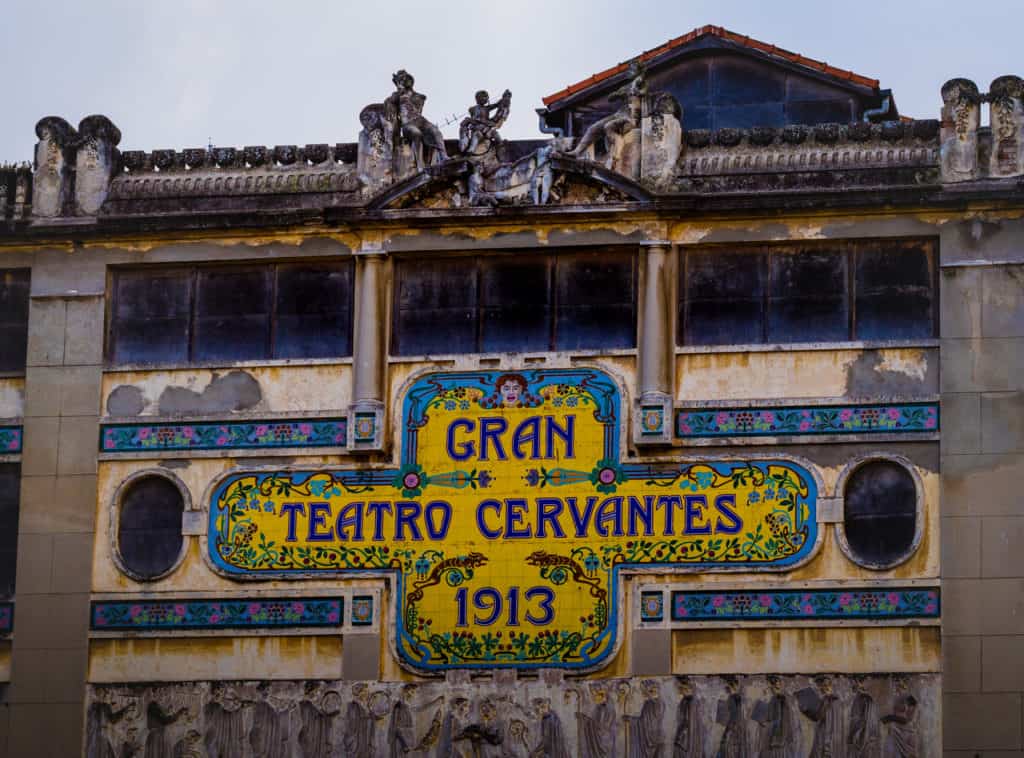
Now, however, restoration is on constant hold due to ongoing disputes between city officials and the Spanish government. For this reason, the interior is closed to the public, but the exterior is worth visiting for a look and a photo.
You can always try and ask permission to enter the theater at the Spanish Consulate in Tangier. However, it might take at least one week and some money before you’ll know if you’re allowed to enter the Gran Teatro Cervantes.
11. Sour Al Maâgazine
Sour Al Maâgazine, also known as “Faro Square“, has been for a long time the meeting place of friends and especially lovers in Tangier. Some very beautiful romantic songs have been dedicated to this popular avenue of Tangier.
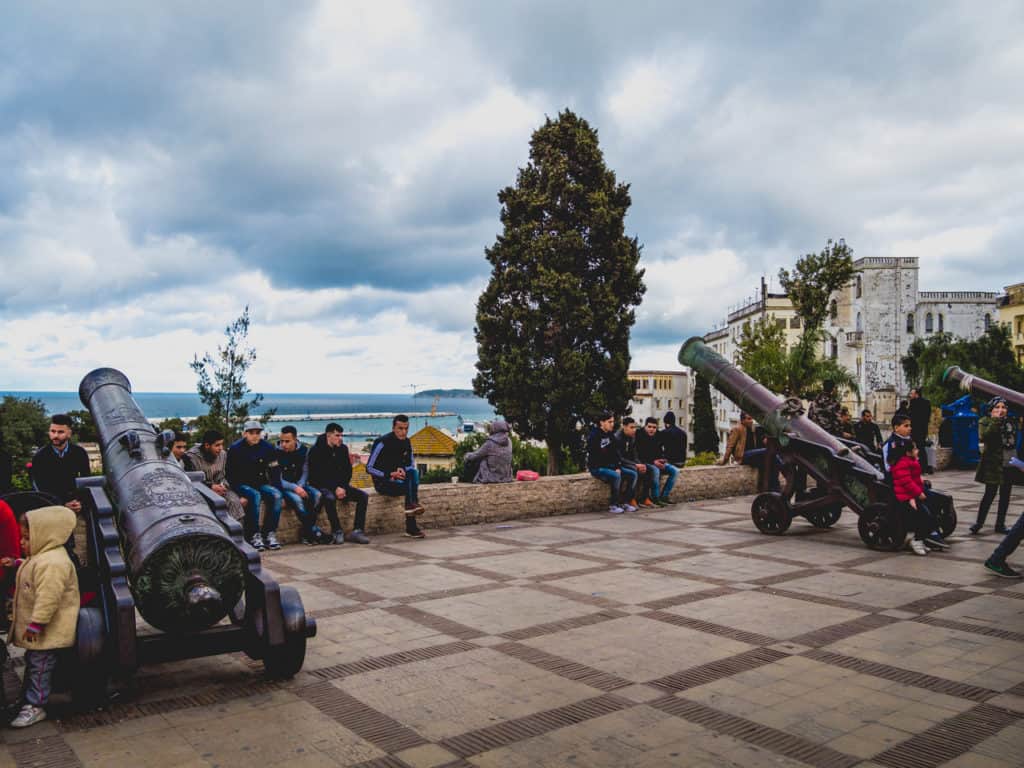
In the summer, this avenue is always full of people enjoying a breathtaking view of the port and the bay of Tangier. People also come to enjoy the constant light breeze coming from the Mediterranean sea.
It is located on Pasteur Avenue and it’s only a 7-minute walk to get to the Grand Socco and the entrance of the Old Kasbah.
12. Gran Cafe De Paris
Gran Cafe de Paris is one of the oldest cafes in Tangier and is part of Tangier’s bohemian history.
The cafe opened in 1927 and was a place of inspiration for many known artists and writers like Jack Kerouac, William Burrough, Paul Bowles and Tennessee Williams – just to name a few – to gather here, have a coffee, smoke a cigarette and discuss life and literature.
Part of the movie The Bourne Ultimatum was filmed in and around Tangier and this cafe has also a moment of fame in the movie.
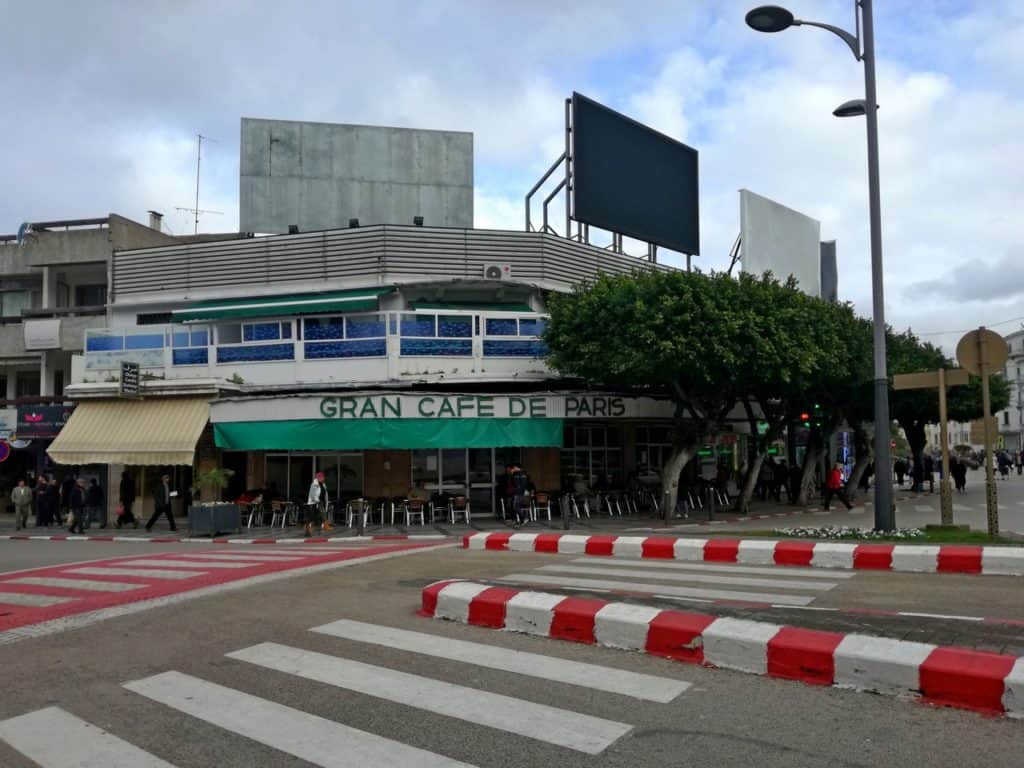
The interior of the cafe has a peculiar atmosphere. Strange how inspiring the old leather of the chairs, the dark paneled walls, the stale smell of cheap tobacco and the rustling sound of newspapers can be.
The waiters are dressed in red jackets and it gives you a feeling of an old private ‘Gentlemen’s Club’ (but women are allowed here as well).
13. Expolore Tangier With The Tanger Ville Hop On Hop Off Bus
Tangier has now official Hop On Hop Off Buses that will bring you to all the different places of interest in one day!
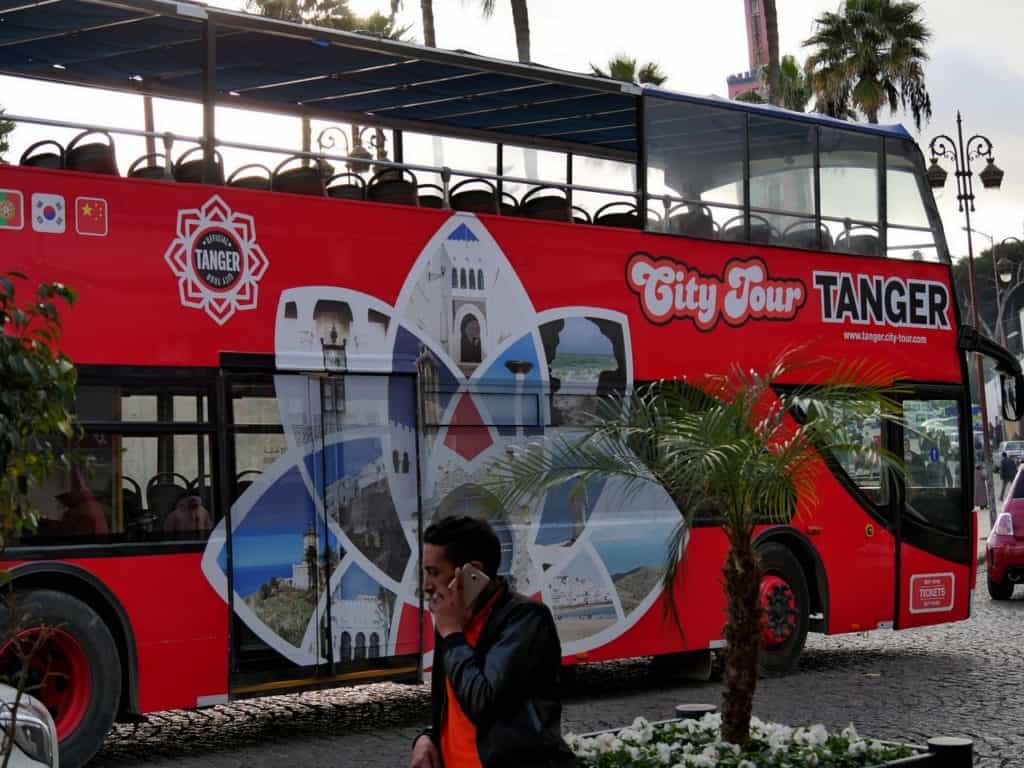
These red double-decker buses run daily from 9 am to 6 pm from April to October and from 9 am to 5 pm from November to March between the historical center of the city to the modern part.
You can hop on and off the bus at the 11 stops as often as you want. Here’s a detailed itinerary of the Tanger Ville Route.
You can board the bus at any of the 11 stops. Tickets can be purchased when you board the bus and cost 130 MAD per person.
14. Explore Tangier With A Local Guide
There are also opportunities to explore Tangier with a local guide. During the Tangier City Discovery Tour, a local guide will take you to all the places of interest in and near the city, including the Hercules Caves (see below). Learn more about this tour here.

15. Cap Spartel
Cap Spartel is a cape located 14 km from Tangier. The cape rises to a height of 326 m and there’s a beautiful lighthouse at the end of the cape.
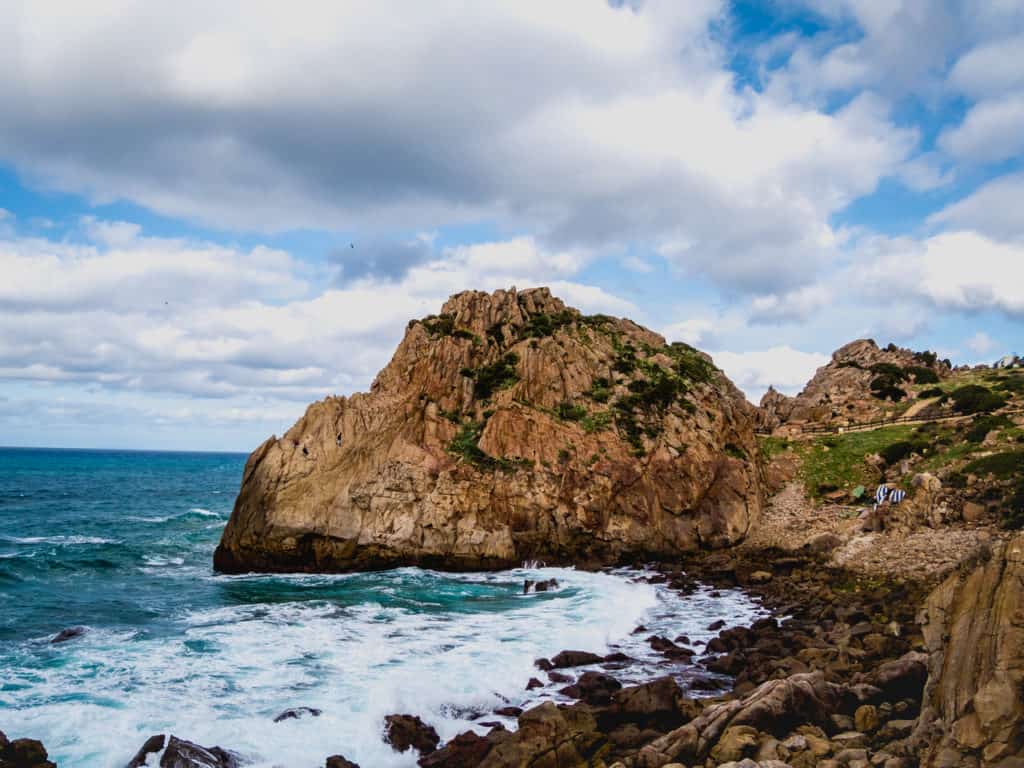
What makes this place so special? On a sunny day, you have an amazing view of where the Atlantic Ocean and The Mediterranean Sea meet.

16. Caves Of Hercules
The Caves of Hercules (Les Grottes d’Hercule) are a bit of a symbol for Tangier, with their strange sea entrance, shaped like a map of Africa.
The main caves are part of a massive archaeological cave complex located 14 kilometers west of Tangier.

The caves are part natural and part man-made. The natural part was formed by the waves of the Atlantic Ocean while the man-made part was used by Berber people to cut stone wheels from the walls.
The caves date back to 2500 BC and the name comes from the legend of Hercules as it’s believed he slept in these caves before attempting one of his 12 labors.
17. Join Tangier City Discovery Tour
I recommend you visit the Caves of Hercules first, then walk north along the beach towards Cap Spartel.
It’s only one hour of walking and it’s very enjoyable, especially on a sunny day. Along the way, you’ll come across abandoned holiday houses, caves and cliffs.
18. Ruins Of Cotta
The ruins of Cotta, an ancient Roman settlement founded in the 2nd century, are very close to the caves of Hercules and Cape Spartel.
The remains of a factory building, a temple, and some baths complex have been unearthed here, and it is believed that the inhabitants of the settlement made a living by producing a type of fish sauce as was the case with the town of Lixus (see 4. Ruins of Lixus), one of Morocco’s oldest continuously inhabited sites.
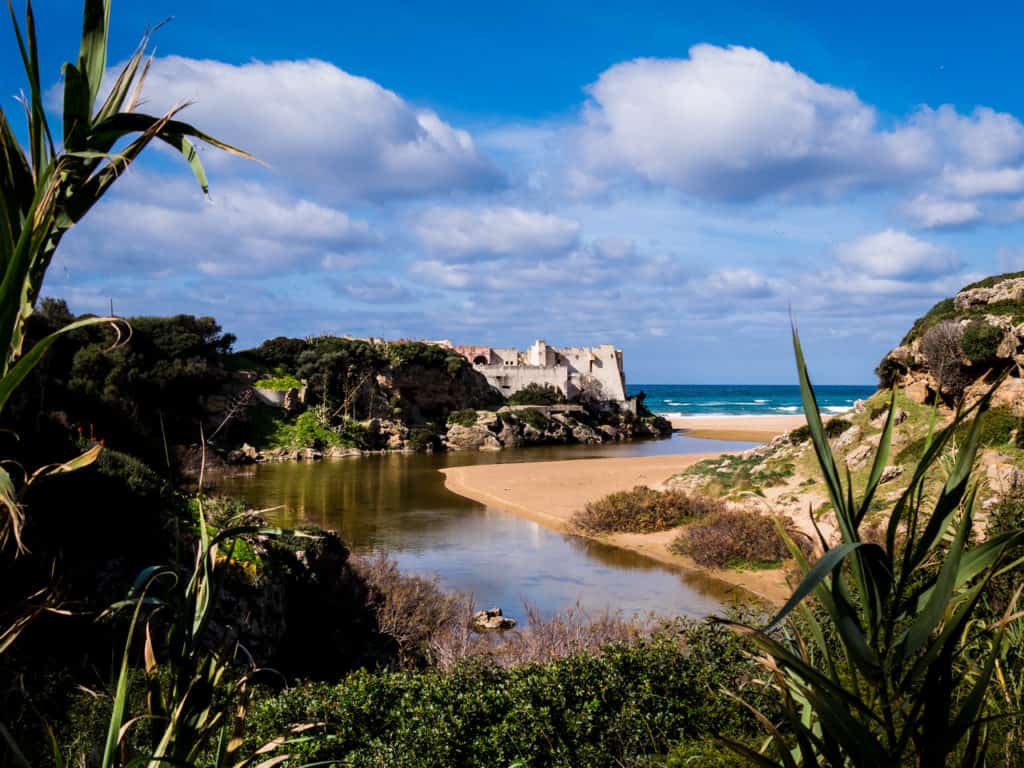
Unfortunately, you can’t visit these ruins anymore as a rich Arabian sheik (or so the story goes) has bought land around the ruins, thus fencing them and preventing tourists from accessing the area.
19 . Borj Al Kamra
The Al Kamra Tower or the Borj Al Kamra is one of the oldest historical sites in Asilah. It was built in 1509 when the city was under Portuguese occupation so it’s a perfect example of Portuguese architecture in Morocco.
This tower was built under the orders of the King of Portugal Emmanuel I to serve as a residence for his married daughter to the Portuguese governor of Asilah. He wanted to make a beautiful and huge building to allow his daughter, very attached to his country, to see Portugal from the coast of Morocco.
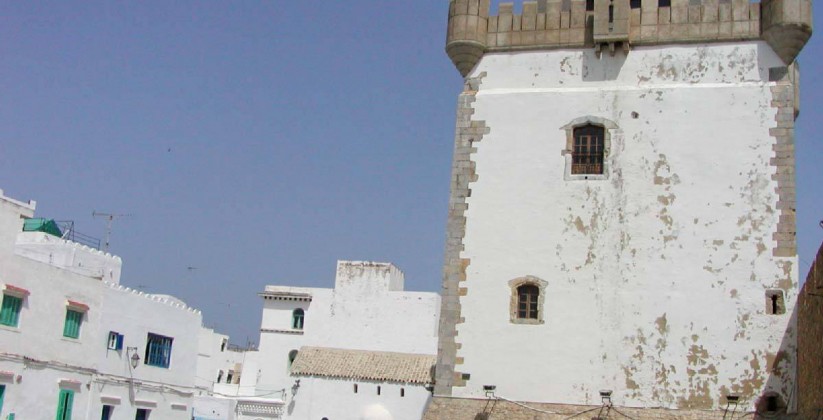
Construction began in 1505 and it took four years to achieve an architectural marvel that centuries later is among the oldest historical monuments in the city.
Getting to Asilah from Tangier is very easy as the cities are only 50 km from each other. It’s possible to get there by taxi or by train.
Moroccan Railways (ONCF) have a train from Tangier to Asilah every 4 hours. Tickets cost between 19 and 50 Moroccan Dirhams and the journey takes 42 min. It’s also possible to get there with a shared Grand Taxi (the big beige ones) for 45 to 75 Moroccan Dirhams.
20. Ruins Of Lixus
Lixus is the site of an ancient Roman-Berber city located in Larache. Megalithic stones found in the vicinity of Lixus suggest that the site was originally inhabited by sun-worshipping people with knowledge of astronomy and mathematics and then became a Roman city.
The main gate to the ruined city is just off the highway. Only about a quarter of the ancient city has been unearthed from the ground so far.
The ruins that are visible, although badly damaged and a bit overgrown, hint at how big and important this city once was, and it’s totally worth a visit.
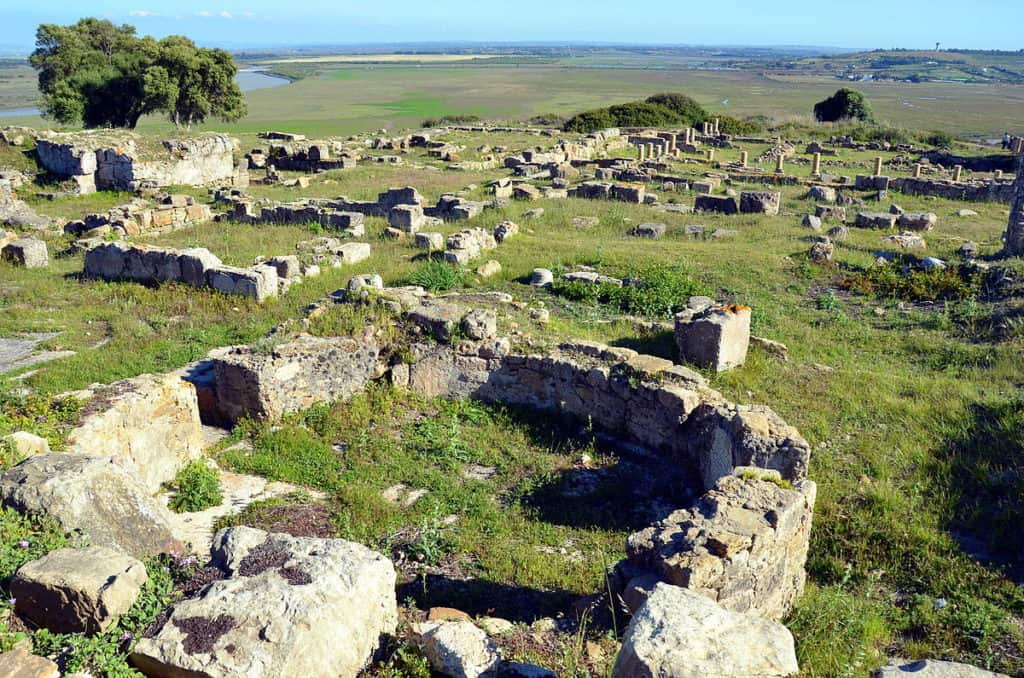
There is no entrance fee at the moment but if there is a guardian on duty, he will usually be happy to lead visitors through the site for a small tip.
Larache is located 88 kilometers south of Tangier following highway A1. You can reach this city from Tangier by train, by taxi or by bus.
Where To Stay In Tangier
Tangier is a city that is worth taking the time to discover, so you will want to stay there at least a night or two. It is a city rich in traditional architecture. One of the best experiences you can have in Morocco is staying in a Riad, typical rich Moroccan houses with indoor courtyards and fountains, designed with zellij (Moroccan tiles).
Source: journalofnomads







